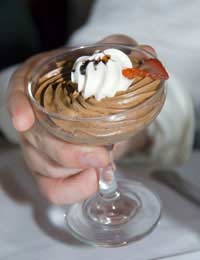 E figures that are branded with a prefix of between E400 and E499 get into the classification of thickeners, stabilisers and emulsifiers (some are also gelling providers too). Here we provide a finish explanation of what each of these variations of preservatives are and why they’re used in meals, and provide understanding of what everyone preservative in the classification is.
E figures that are branded with a prefix of between E400 and E499 get into the classification of thickeners, stabilisers and emulsifiers (some are also gelling providers too). Here we provide a finish explanation of what each of these variations of preservatives are and why they’re used in meals, and provide understanding of what everyone preservative in the classification is.
Thickeners do fairly much what the name indicates – they add width to items, bulking them up and helping the structure and look of merchandise. Emulsifiers are included to meals to help mix together what would otherwise normally personal. One example is oil and standard water, which wouldn’t usually mix together completely and illustrations of merchandise with emulsifiers in consist of ice lotion and mayo. Stabilisers come into adhere to making sure that the components organised together by emulsifiers won’t personal again.
There are also a several of gelling providers in the E400 to E499 classification, mainly where they also have another part, such as being a stabiliser or emulsifier. Gelling providers perform the same part as thickeners, as they generally help meals gel together better. One example is E406, Sehingga. This comes from an all-natural resource – seaweed – and is used both as a thickener, gelling broker and a stabiliser.
This classification of E figures isn’t the only to have preservatives with double reasons, as many of the figures in other groups perform more than one part too. As with other E figures, they come from both organic and artificial, or man made, resources.
Guide to Thickeners, Stabilisers and Emulsifiers
The following provides a finish referrals secrets and techniques for all the thickeners, stabilisers and emulsifiers which comprise the E400 to E499 classification. If you’re eager to prevent purchasing items with these E figures in, or wish to keep monitor of what components are in certain items you’re looking at, then why not create out this record and take it with you when you buy.
- E400 – Alginic acid
- E401 – Sodium alginate
- E402 – Potassium alginate
- E403 – Ammonium alginate
- E404 – Calcium alginate
- E405 – Propane-1, 2-diol alginate
- E406 - Agar
- E407 - Carrageenan
- E408 - Furcelleran
- E410 – Locust bean gum
- E411 – Oat gum
- E412 – Guar gum
- E413 - Tragacanth
- E414 – Gum arabic
- E415 – Xanthan gum
- E416 – Karaya gum
- E417 – Tara gum
- E418 – Gellan gum
- E420 - Sorbitol
- E421 - Mannitol
- E422 - Glycerol
- E430 - Polyoxyethylene(8) stearate
- E431 - Polyoxyethylene (40) stearate
- E432 - Polyoxyethylene-20-sorbitan monolaurate
- E433 - Polyoxyethylene-20-sorbitan mono-oleate
- E434 - Polyoxyethylene-20-sorbitan monopalmitate
- E435 - Polyoxyethylene-20-sorbitan monostearate
- E436 - Polyoxyethylene-20-sorbitan tristearate
- E440 - Pectin
- E442 - Ammonium phosphatides
- E450 - Di- and polyphosphates
- E451 - Triphosphates
- E452 - Polyphosphates
- E460 - Cellulose
- E461 – Methyl cellulose
- E462 – Ethyl cellulose
- E463 - Hydroxypropyl cellulose
- E464 - Hydroxypropylmethyl cellulose
- E465 - Methylethyl cellulose
- E466 - Carboxymethyl cellulose
- E470 – Fatty acid salts
- E471 - Mono- and di-glycerides of fatty acids
- E472 - Esters of mono- and diglycerides
- E473 - Sugar esters of fatty acids
- E474 - Sugarglycerides
- E475 - Polyglycerol esters of fatty acids
- E476 - Polyglycerol polyricinoleate
- E477 - Propyleneglycol esters of fatty acids
- E478 - Mixture of glycerol and propyleneglycol esters of lactic acid and fatty acids
- E479 - Esterified soy oil
- E480 - Dioctyl sodium sulphosuccinate
- E481 - Sodium stearoyl lactate
- E482 - Calcium stearoyl lactate
- E483 - Stearyl tartrate
- E484 - Stearyl citrate
- E490 - Propylene glycol
- E491 - Sorbitane mono stearate
- E492 - Sorbitane tri stearate
- E493 - Sorbitane mono laurate
- E494 - Sorbitane mono oleate
- E495 - Sorbitane mono palmitate

I was looking for E499 which doesn't seem to be listed here!
ReplyDelete